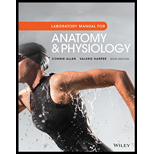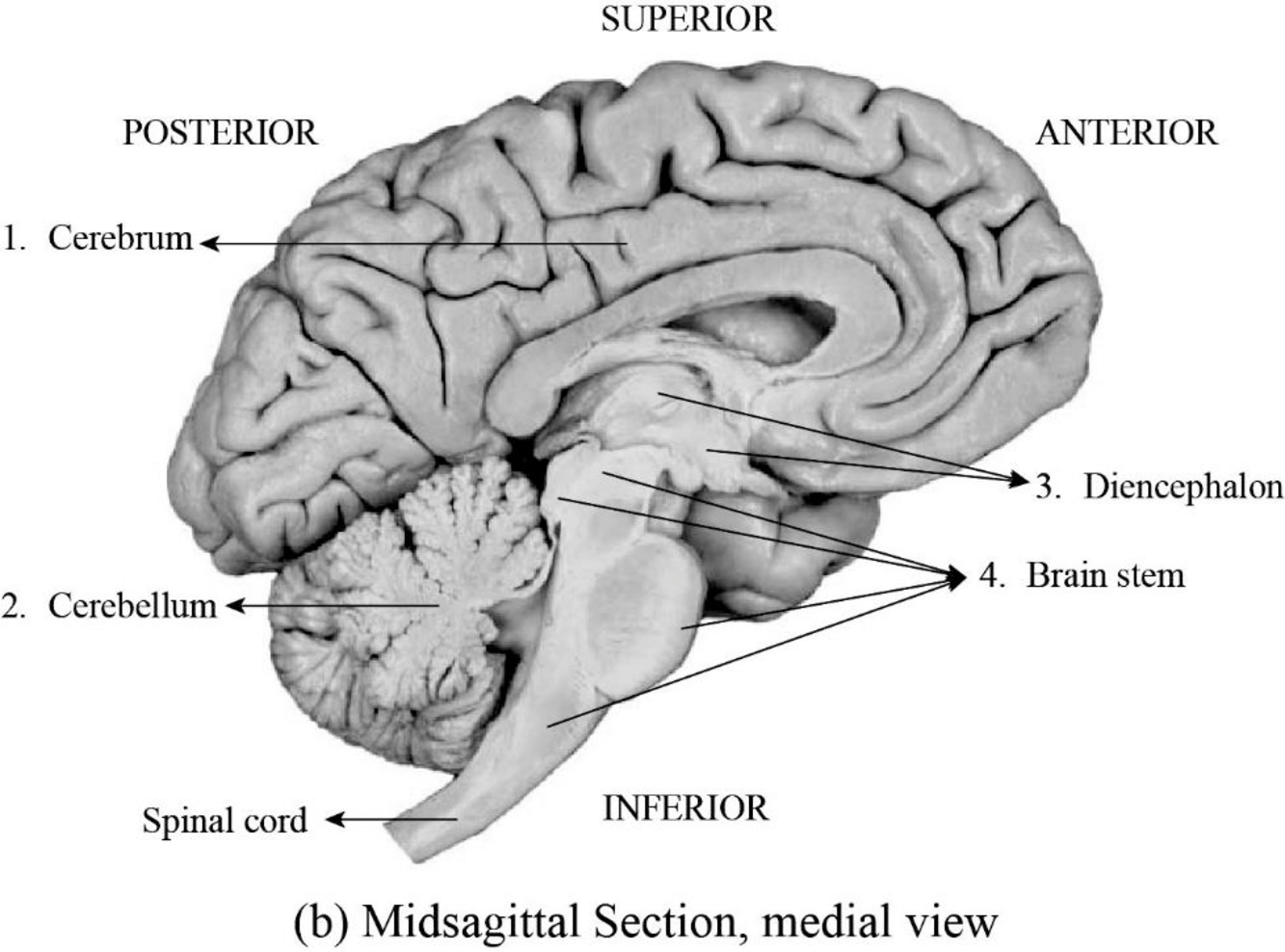
Concept explainers
To identify: The major brain regions in Fig 20.1.
Introduction: The brain is the most vital organ in the human body. The brain has three major regions namely, the cerebrum, brainstem, and cerebellum. The brain is the central processing unit of the body as most of the processes such as, voluntary to involuntary function and the cognitive function, are carried out by the brain.
Answer to Problem 1.1BGL
Pictorial representation:

Fig.1: The major brain regions.
Explanation of Solution
Cerebrum: The cerebrum is the biggest and the most complicated among all the regions and structures of the brain. The cerebrum is divided into the left and right hemispheres. The cerebrum account for higher mental functions, cognitive thinking, and intelligence. The cerebrum accounts for thinking and reasoning to process the information from the surrounding that can implement the desired movement in the skilled skeletal movement.
Cerebellum: The cerebellum is also called as little brain and located inferior to the cerebrum and posterior to the pons and medulla oblongata. The vital functions of the cerebellum are to process sensory information, maintain balance, posture, and aid in the movement of the skeletal muscles in a skillful way. Depending upon the injury in the cerebellum, the person can be paraplegic from the neck to the feet, paraplegic only to the waist, or only below the waist. Some minor injury in the cerebellum can lead to the unsteady gait, loss of coordinated movement, and slurred speech.
Diencephalon: The “di” means two and “encephalon” means the brain, as it is embedded inferior to the two cerebral hemispheres and anterior to the midbrain. Thus, the diencephalon occupies the central region of the brain. The diencephalon contains the thalamus, hypothalamus, and epithalamus, which are important for secreting hormones, process sleep wake cycle, express emotions, and process sensation to eat and drink.
Brain stem: The brain stem has three major regions namely, the pons, midbrain, and medulla oblongata. The brain stem is located posterior to the superior brain region. The brain stem is a vital feature of the brain as it maintains consciousness as well as regulate the sleep cycle. Any injury to the brain stem leads to life-threatening complications.
Want to see more full solutions like this?
Chapter 20 Solutions
EBK LABORATORY MANUAL FOR ANATOMY AND P
- 22. Which of the following mutant proteins is expected to have a dominant negative effect when over- expressed in normal cells? a. mutant PI3-kinase that lacks the SH2 domain but retains the kinase function b. mutant Grb2 protein that cannot bind to RTK c. mutant RTK that lacks the extracellular domain d. mutant PDK that has the PH domain but lost the kinase function e. all of the abovearrow_forwardWhat is the label ?arrow_forwardCan you described the image? Can you explain the question as well their answer and how to get to an answer to an problem like this?arrow_forward
- Describe the principle of homeostasis.arrow_forwardExplain how the hormones of the glands listed below travel around the body to target organs and tissues : Pituitary gland Hypothalamus Thyroid Parathyroid Adrenal Pineal Pancreas(islets of langerhans) Gonads (testes and ovaries) Placentaarrow_forwardWhat are the functions of the hormones produced in the glands listed below: Pituitary gland Hypothalamus Thyroid Parathyroid Adrenal Pineal Pancreas(islets of langerhans) Gonads (testes and ovaries) Placentaarrow_forward
 Human Anatomy & Physiology (11th Edition)BiologyISBN:9780134580999Author:Elaine N. Marieb, Katja N. HoehnPublisher:PEARSON
Human Anatomy & Physiology (11th Edition)BiologyISBN:9780134580999Author:Elaine N. Marieb, Katja N. HoehnPublisher:PEARSON Biology 2eBiologyISBN:9781947172517Author:Matthew Douglas, Jung Choi, Mary Ann ClarkPublisher:OpenStax
Biology 2eBiologyISBN:9781947172517Author:Matthew Douglas, Jung Choi, Mary Ann ClarkPublisher:OpenStax Anatomy & PhysiologyBiologyISBN:9781259398629Author:McKinley, Michael P., O'loughlin, Valerie Dean, Bidle, Theresa StouterPublisher:Mcgraw Hill Education,
Anatomy & PhysiologyBiologyISBN:9781259398629Author:McKinley, Michael P., O'loughlin, Valerie Dean, Bidle, Theresa StouterPublisher:Mcgraw Hill Education, Molecular Biology of the Cell (Sixth Edition)BiologyISBN:9780815344322Author:Bruce Alberts, Alexander D. Johnson, Julian Lewis, David Morgan, Martin Raff, Keith Roberts, Peter WalterPublisher:W. W. Norton & Company
Molecular Biology of the Cell (Sixth Edition)BiologyISBN:9780815344322Author:Bruce Alberts, Alexander D. Johnson, Julian Lewis, David Morgan, Martin Raff, Keith Roberts, Peter WalterPublisher:W. W. Norton & Company Laboratory Manual For Human Anatomy & PhysiologyBiologyISBN:9781260159363Author:Martin, Terry R., Prentice-craver, CynthiaPublisher:McGraw-Hill Publishing Co.
Laboratory Manual For Human Anatomy & PhysiologyBiologyISBN:9781260159363Author:Martin, Terry R., Prentice-craver, CynthiaPublisher:McGraw-Hill Publishing Co. Inquiry Into Life (16th Edition)BiologyISBN:9781260231700Author:Sylvia S. Mader, Michael WindelspechtPublisher:McGraw Hill Education
Inquiry Into Life (16th Edition)BiologyISBN:9781260231700Author:Sylvia S. Mader, Michael WindelspechtPublisher:McGraw Hill Education





